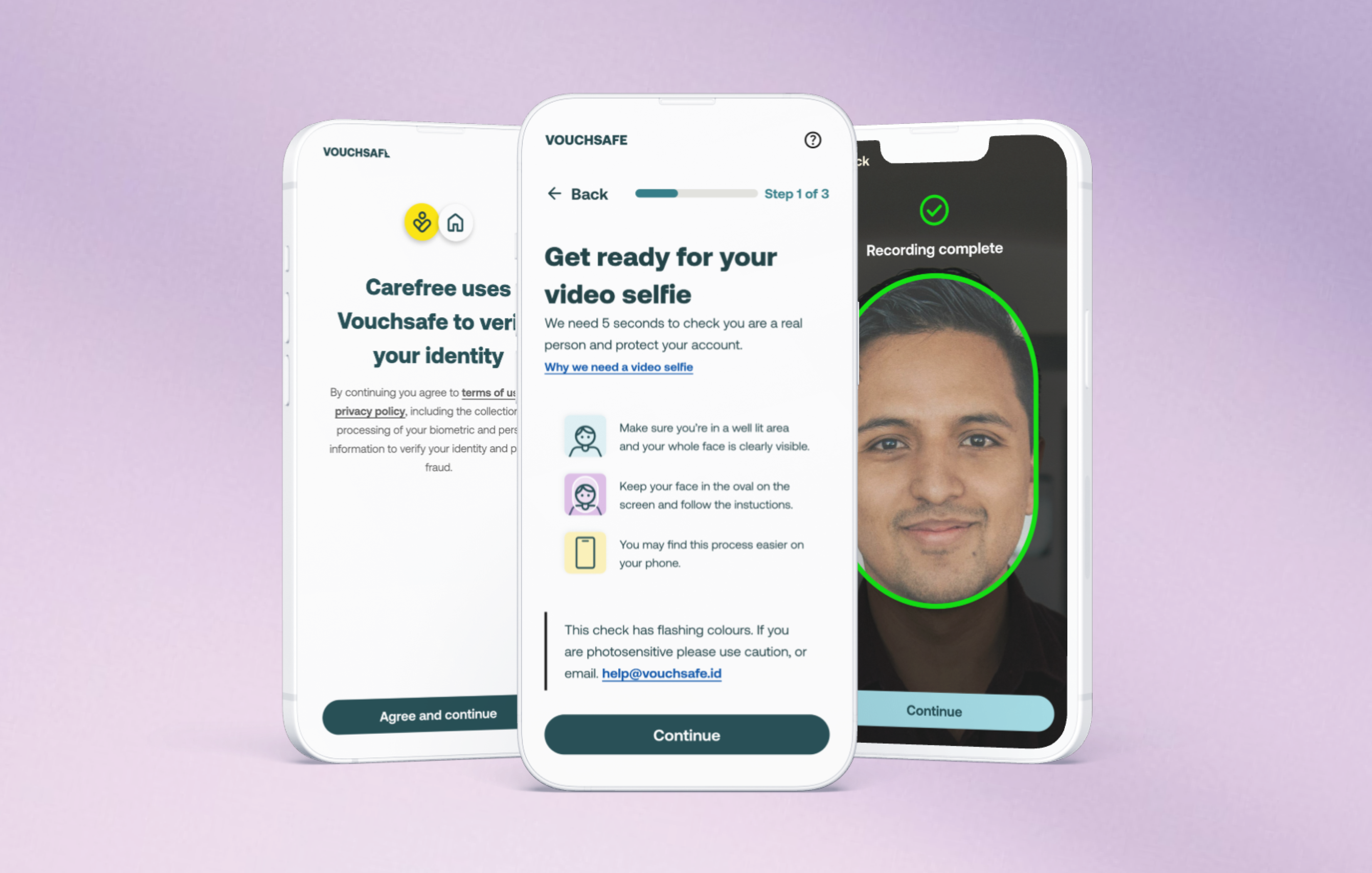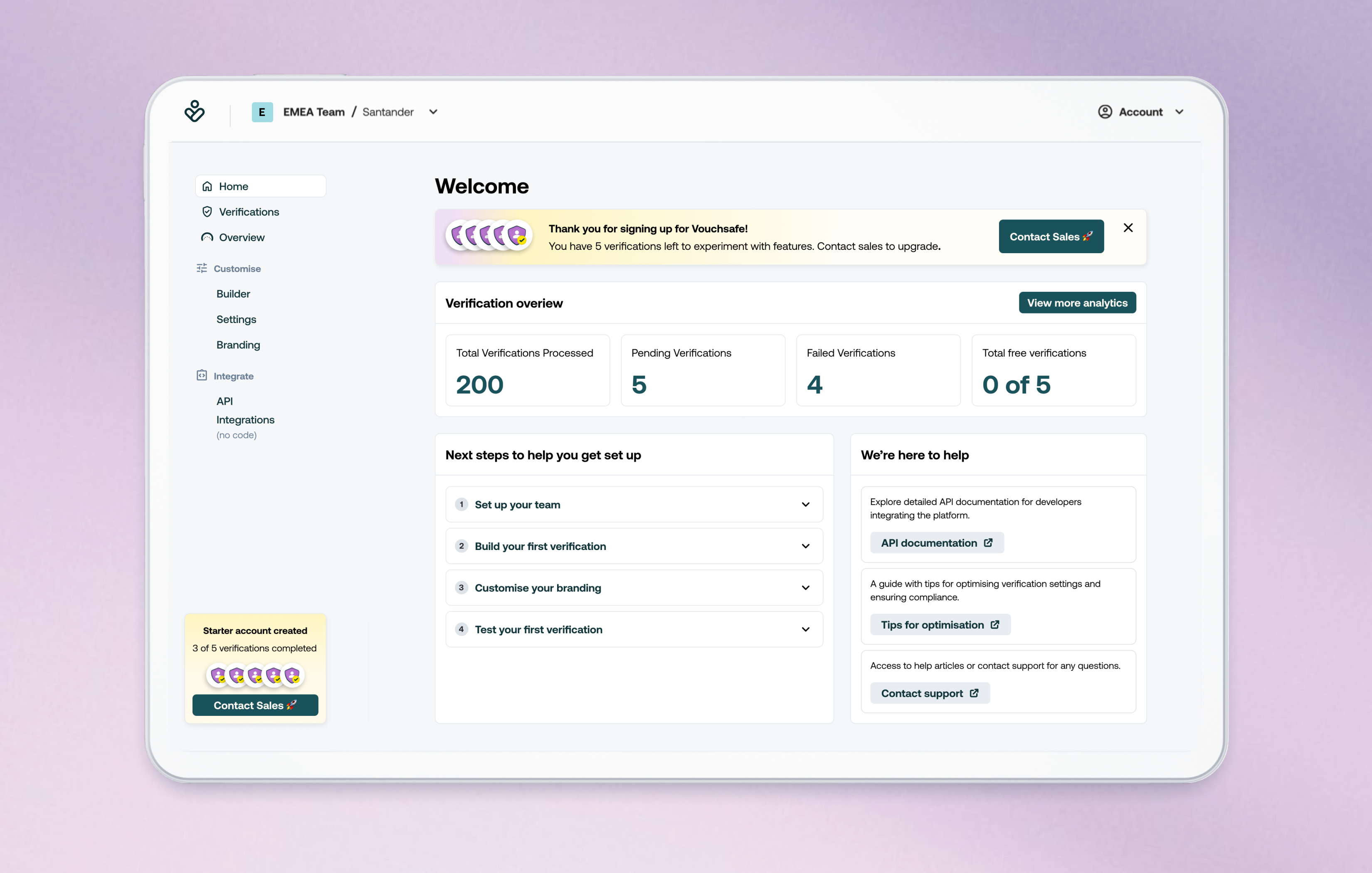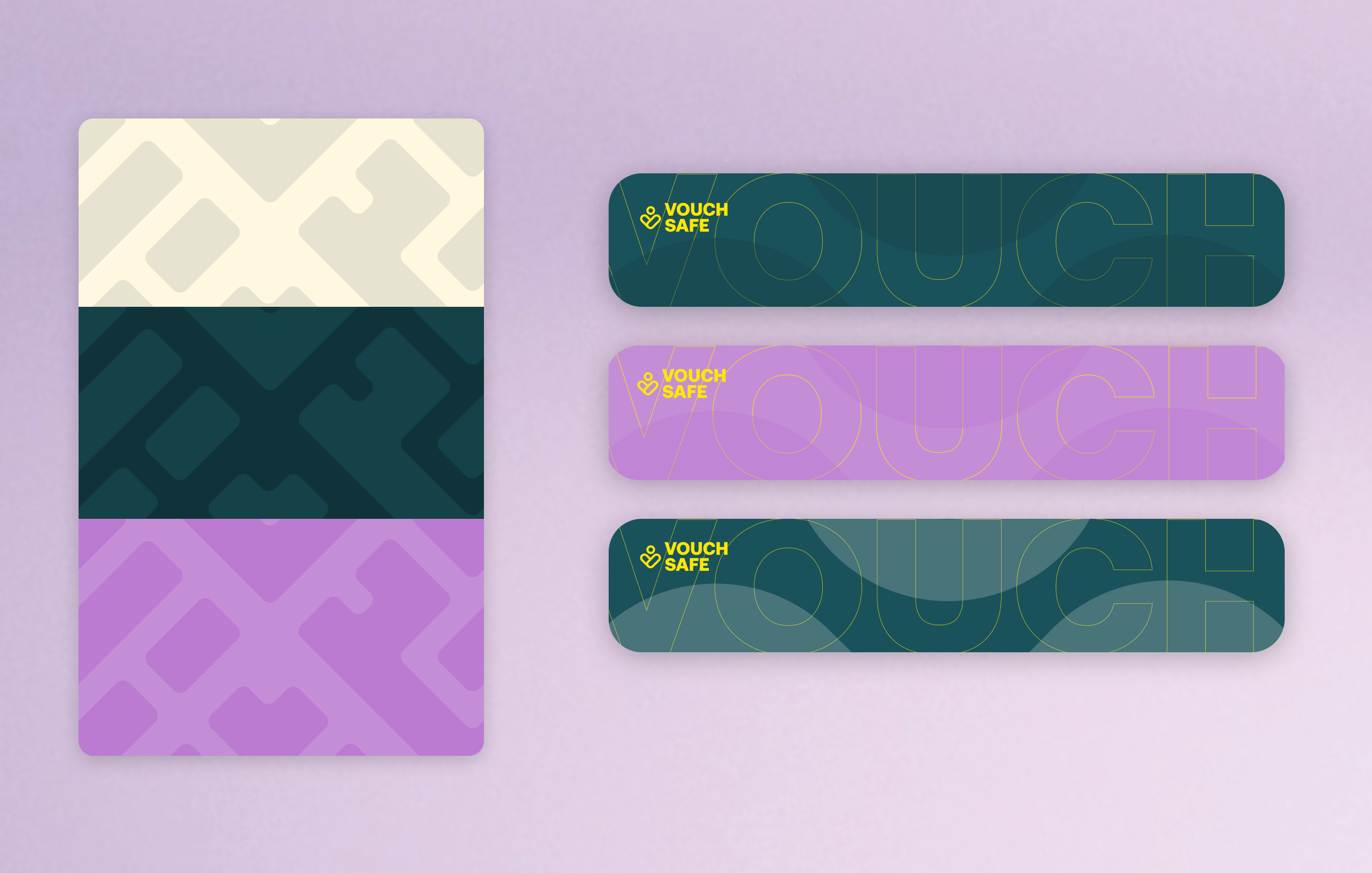VOUCHSAFE

Context
When I joined Vouchsafe, I was stepping into the world of identity verification, a space that touches trust, access, and inclusion. Vouchsafe is a business that helps companies verify anyone, automatically and inclusively. Our goal was simple but ambitious: make onboarding and verification effortless for both businesses and their users.
Problem
Identity verification is a complex process, not just technically, but ethically. Businesses often find verification tools difficult to integrate, which means the people who most need access can’t get through the door.
Goal
The goal was to create a tool that was both business-friendly and human-centered. We wanted to make onboarding frictionless for companies while ensuring users could verify who they are with ease and dignity.

My Approach
1. User journey
2. Wireframing
3. Design system
4. Prototype
1. Understanding the journey
Although we didn’t conduct formal user research, I worked closely with stakeholders to understand the pain points businesses were facing. This helped me map out two core user journeys; one for the businesses onboarding customers, and one for the users going through verification. This mapping revealed the importance of clarity, trust, and speed. Both sides needed reassurance that the process was secure yet simple.
2. Wireframes and structure
I started with low-fidelity wireframes to define how businesses would set up verification flows, view their dashboard, and manage onboarding.On the user side, I explored how to make the verification experience feel smooth and transparent, guiding users step by step without overwhelming them.
3. Building consistency and flexibility
To keep the product scalable, I created a design system that would work across business and user interfaces. I also designed a white-label version of the product so that businesses could integrate verification seamlessly into their own platforms.This required designing flexible UI components that could adapt to different brands without losing clarity or accessibility.

4. Prototyping and testing
I built interactive prototypes in Figma to test how the flows felt from both perspectives, the business and the end-user. This helped refine the micro-interactions and confirm that the onboarding process was intuitive and achievable without extra explanation.
Conclusion
This project taught me how to design for both conversion and compassion, balancing the needs of businesses with the realities of users. Ultimately, this project reinforced the idea that inclusion starts with usability, if we don’t make it easy for businesses to adopt inclusive tools, the people who need them most never get the chance to use them.

